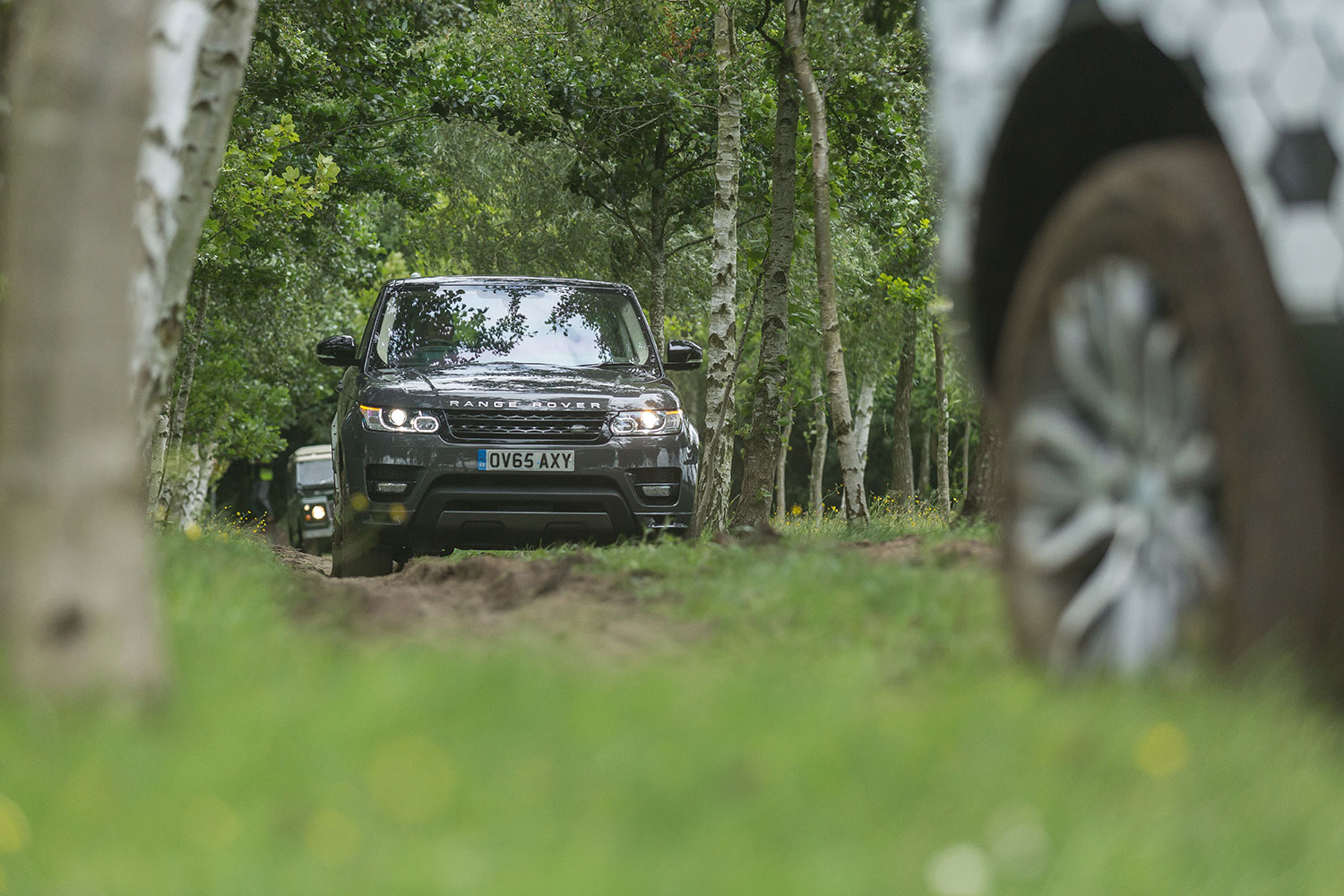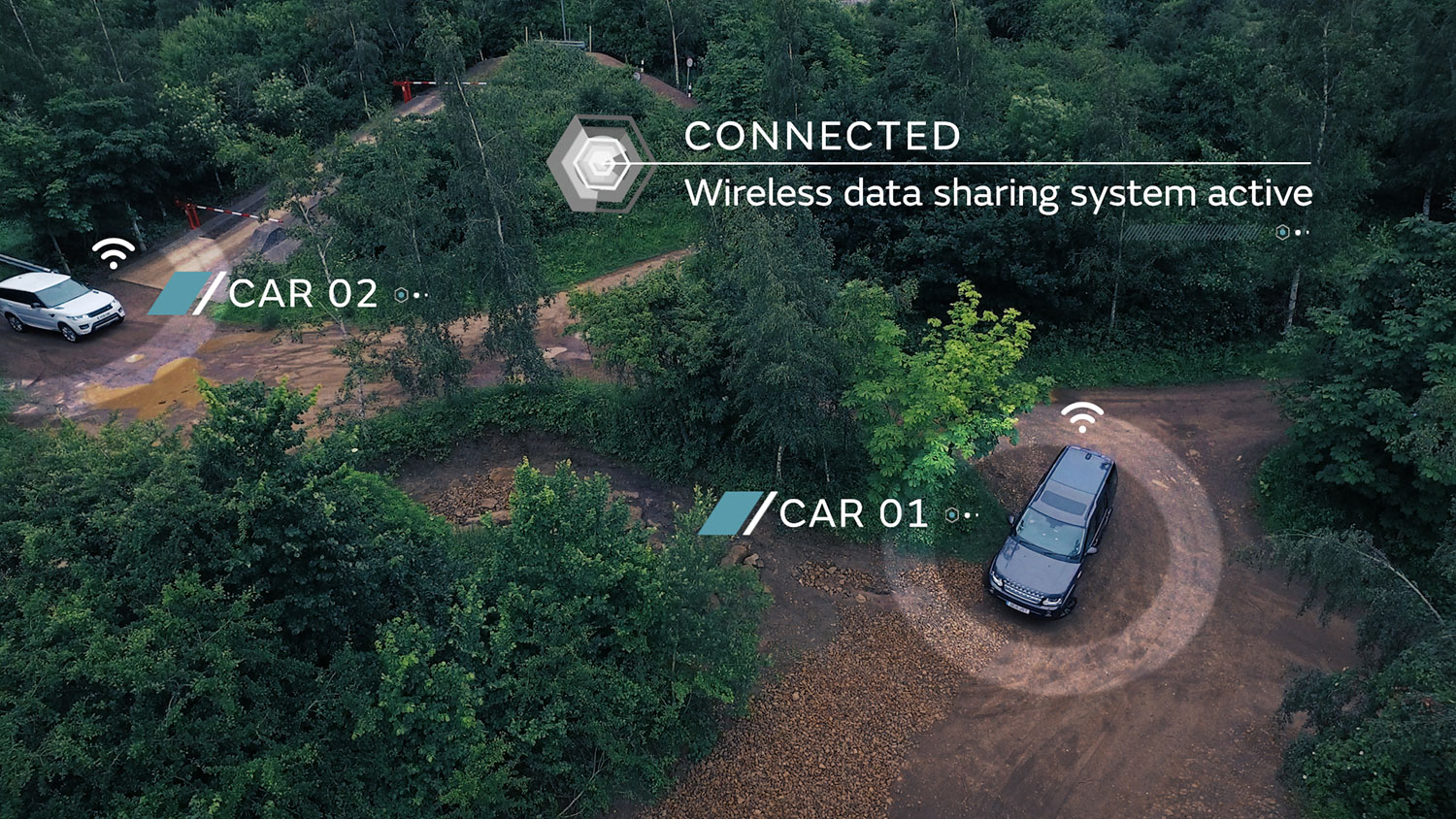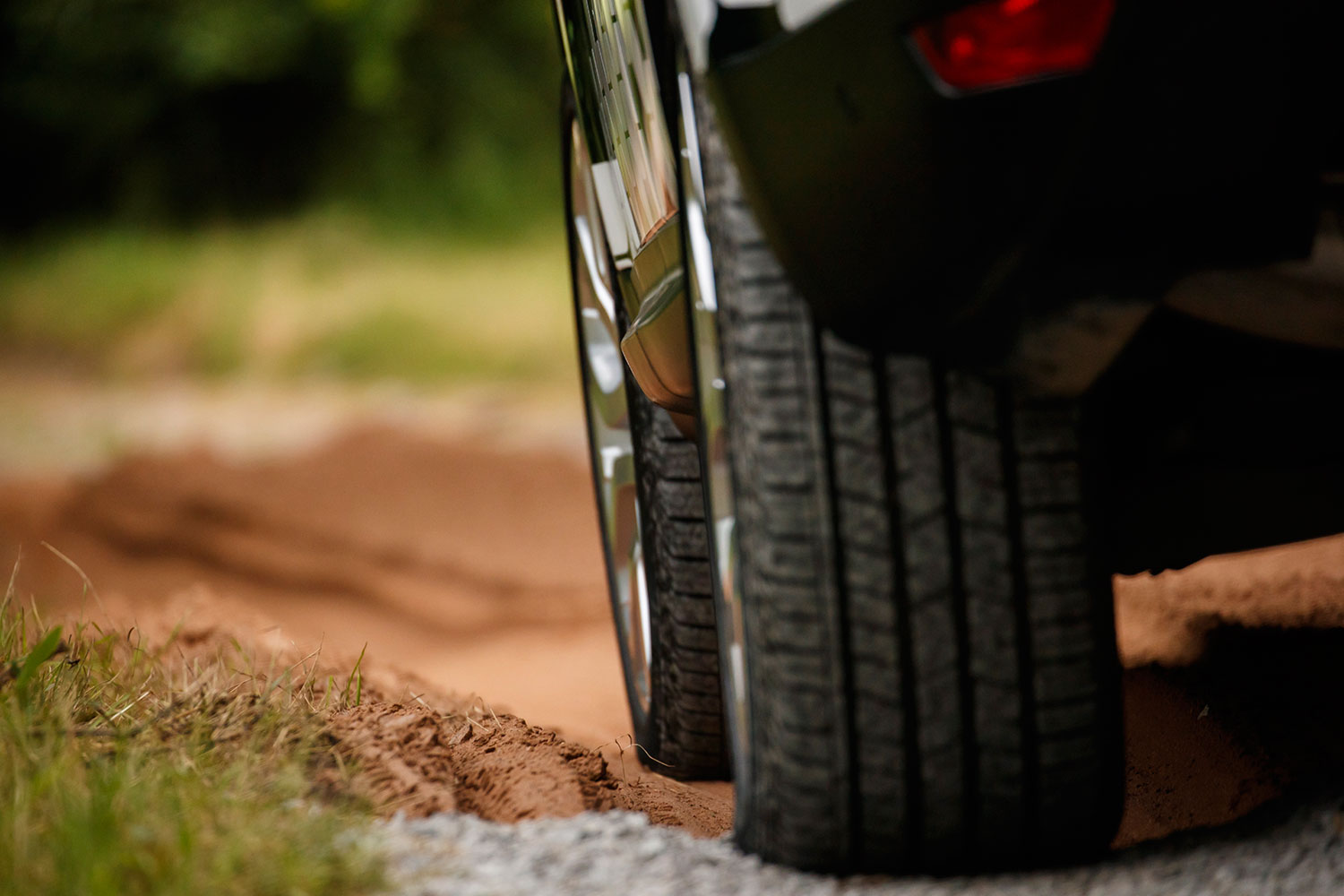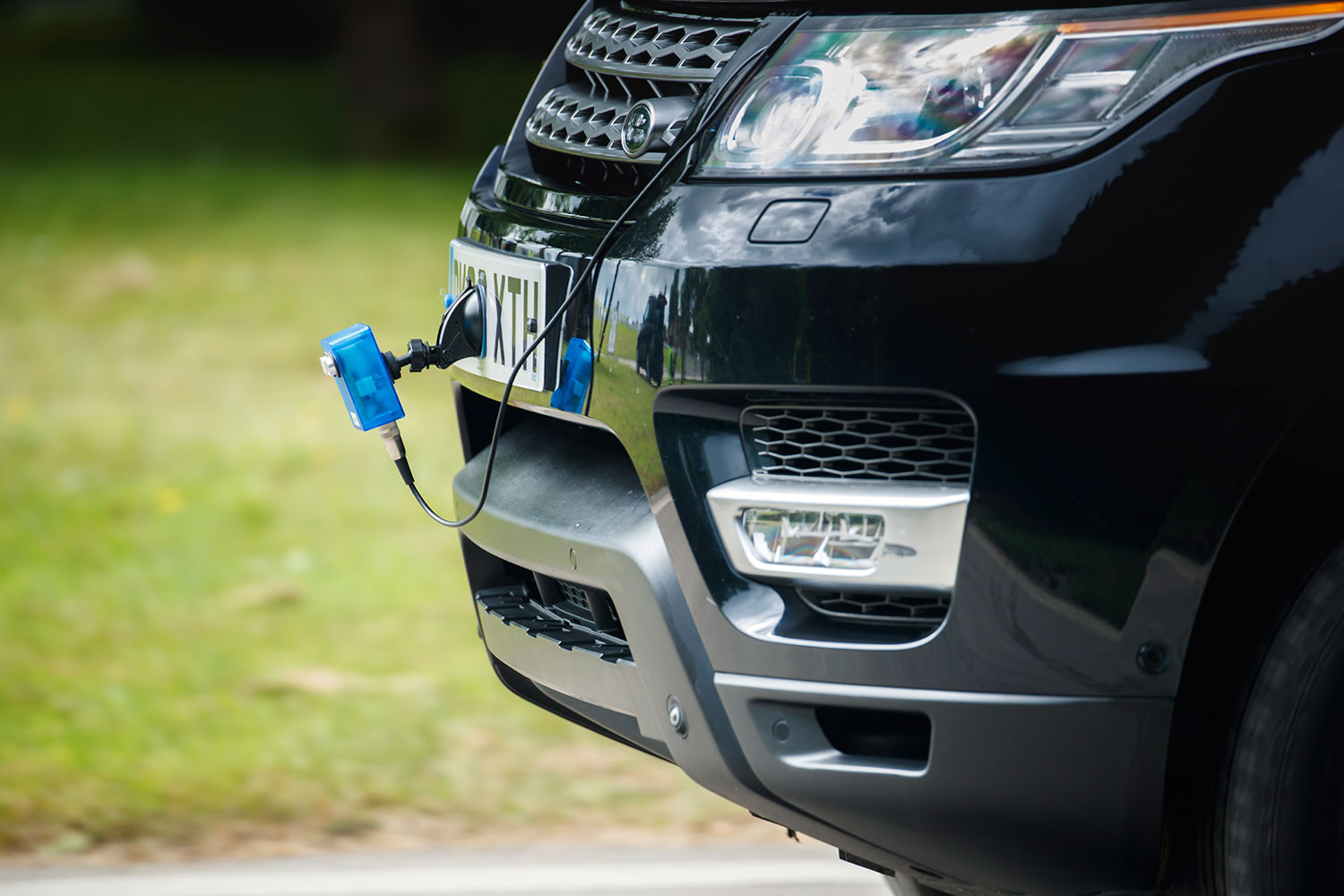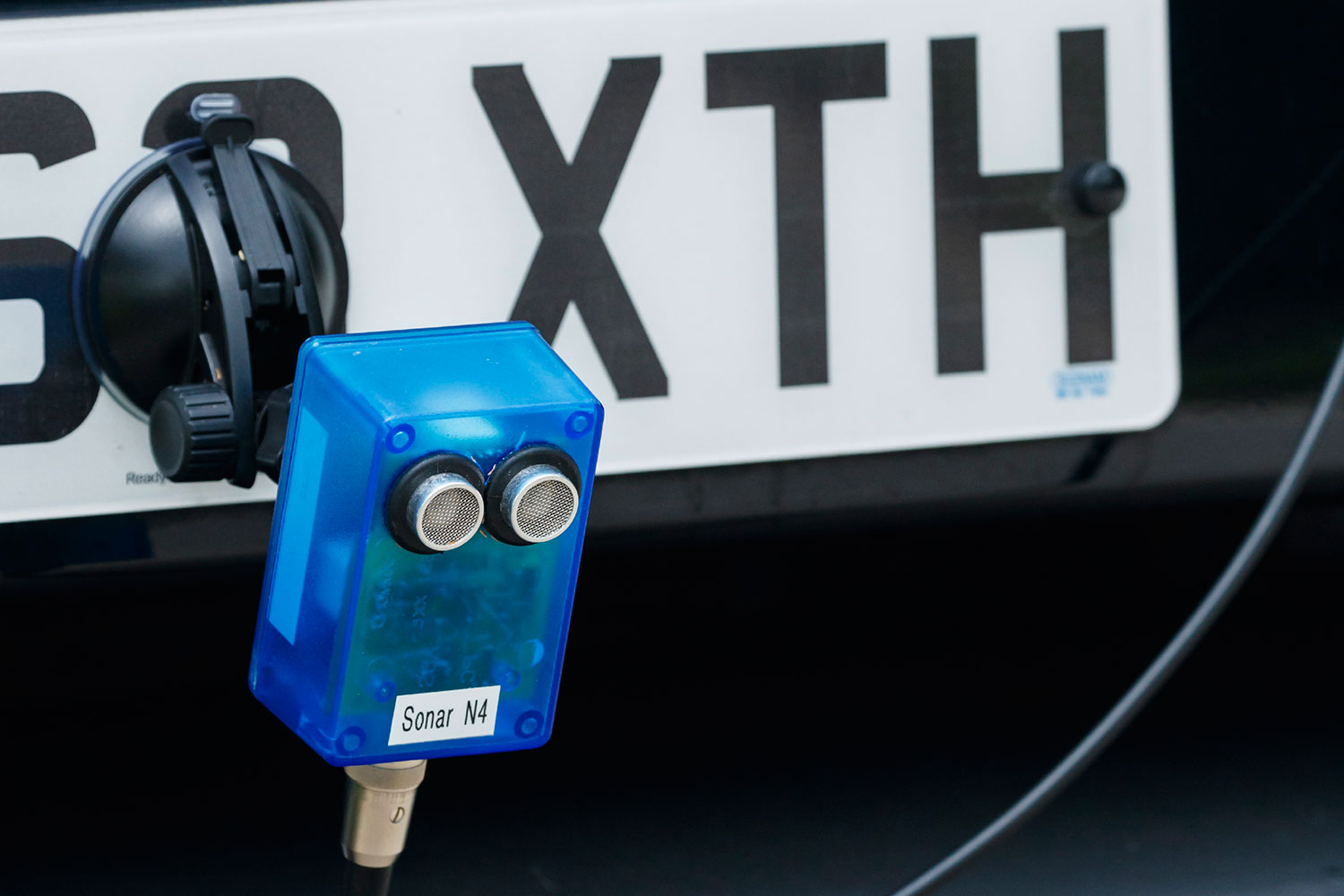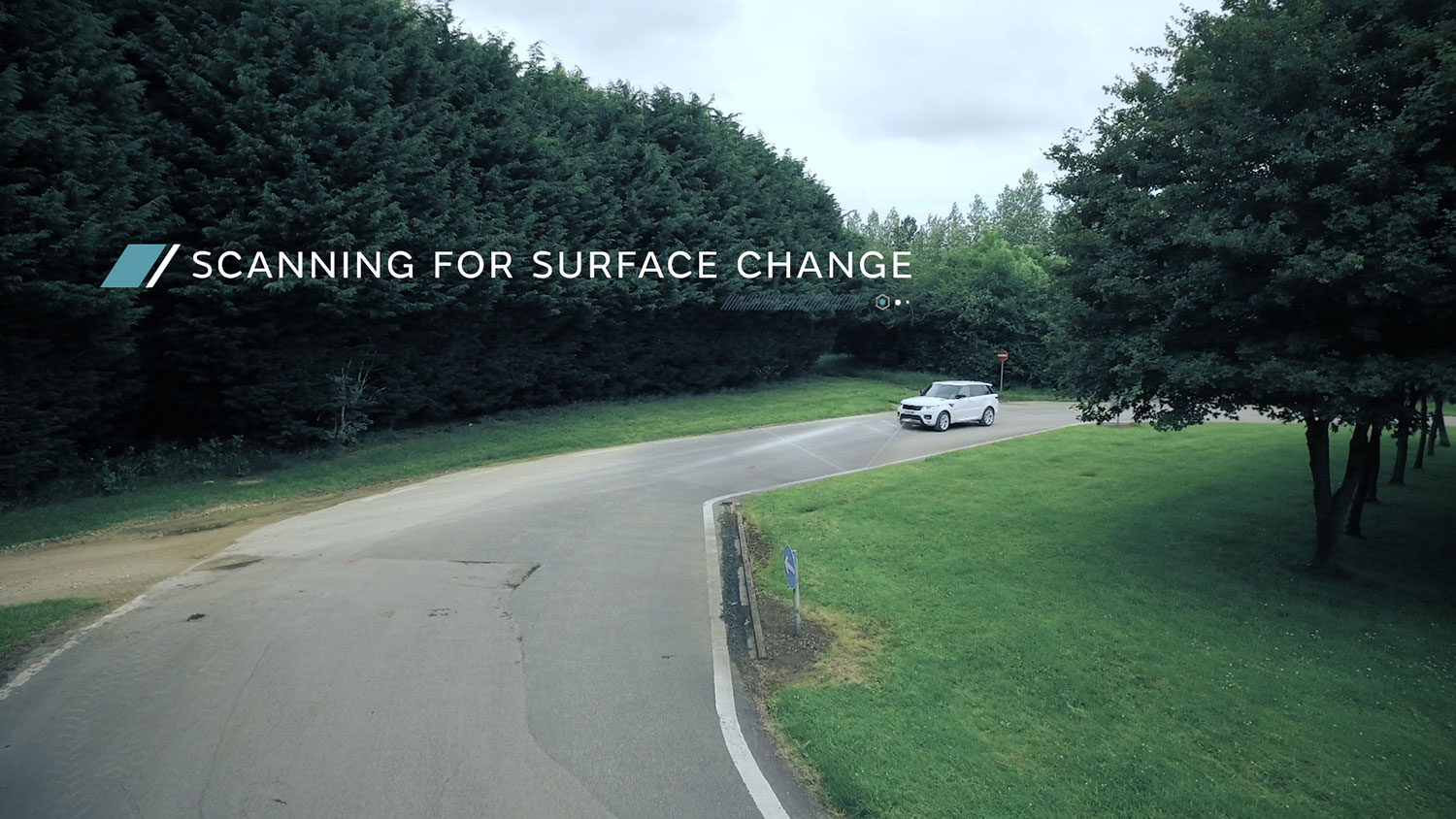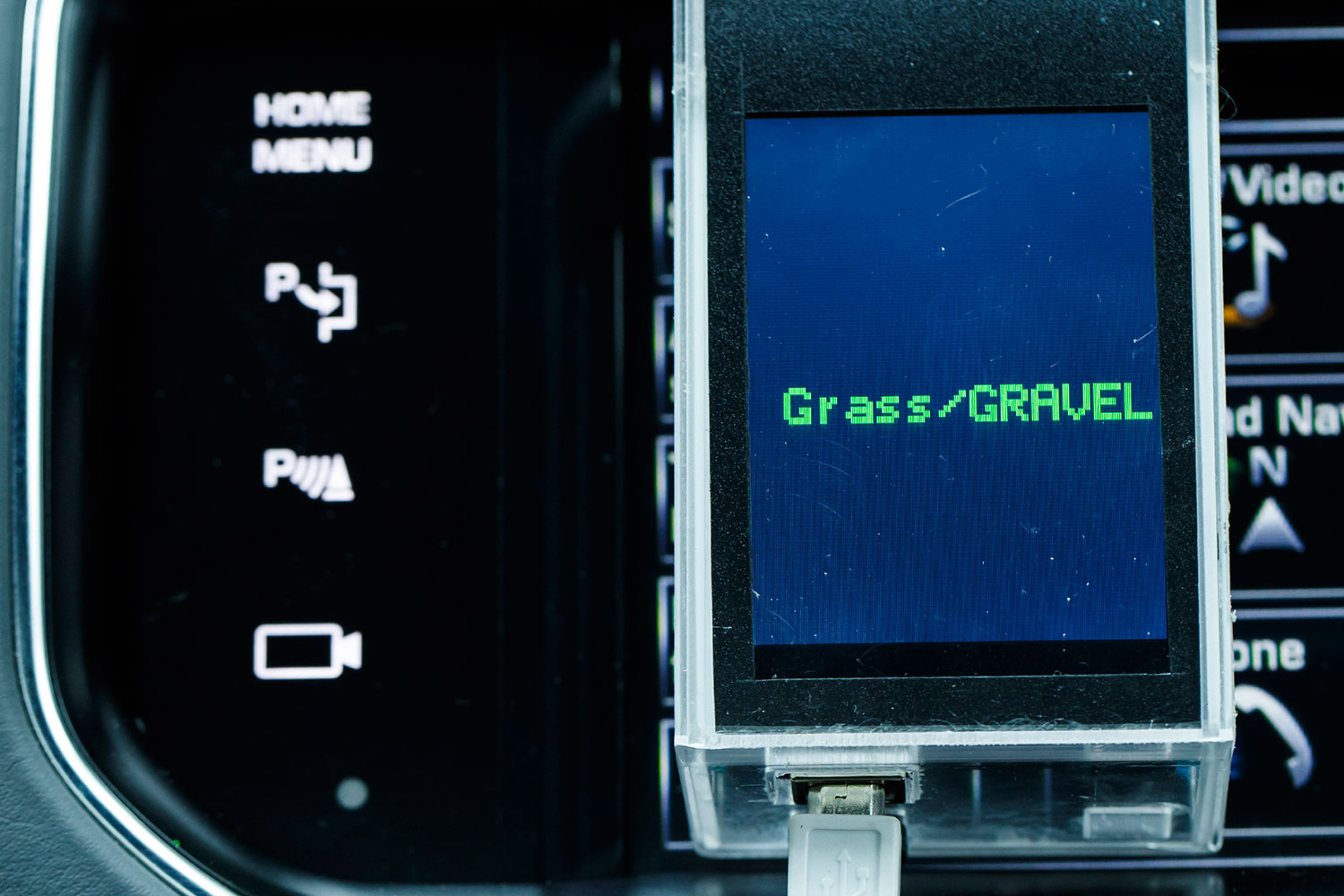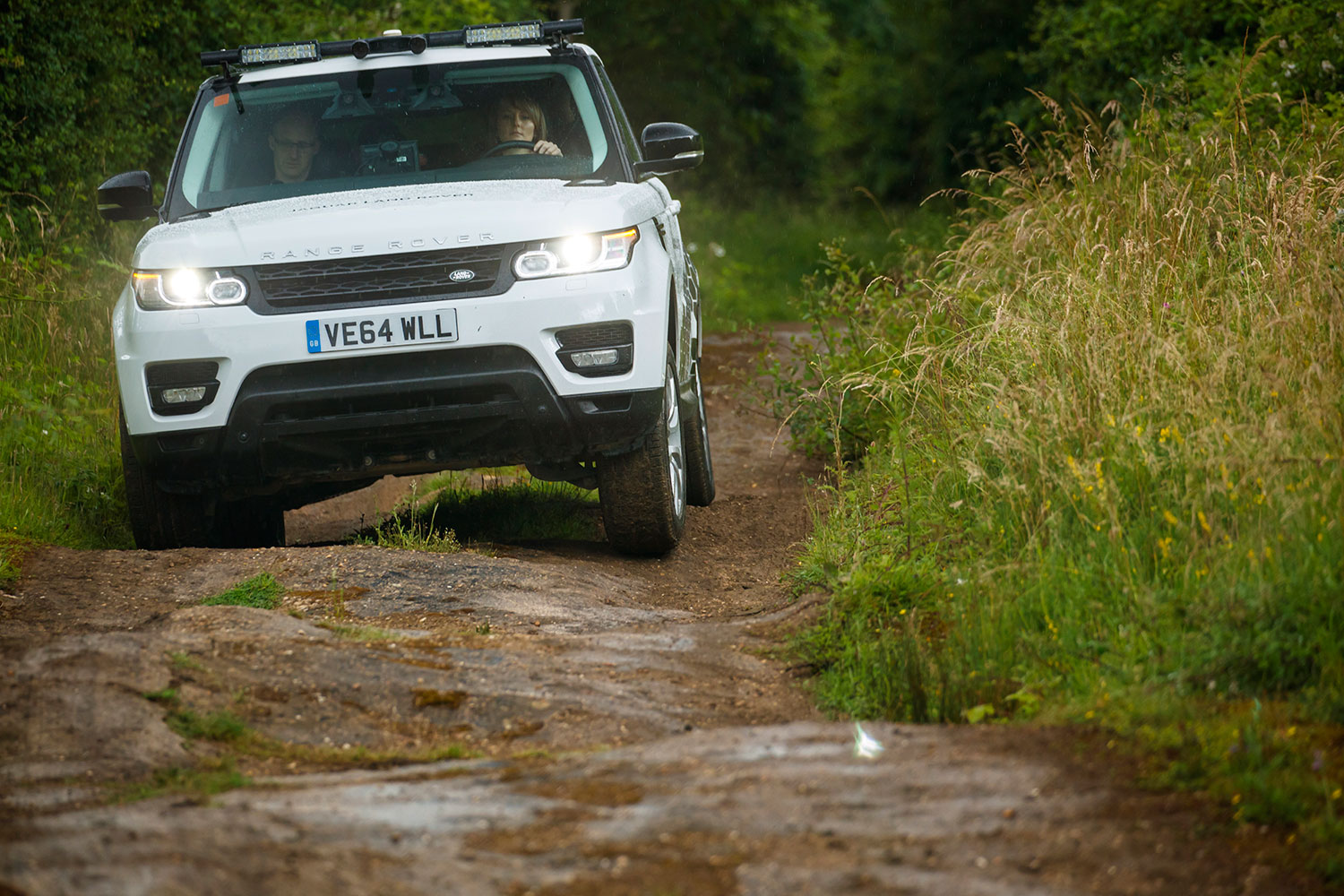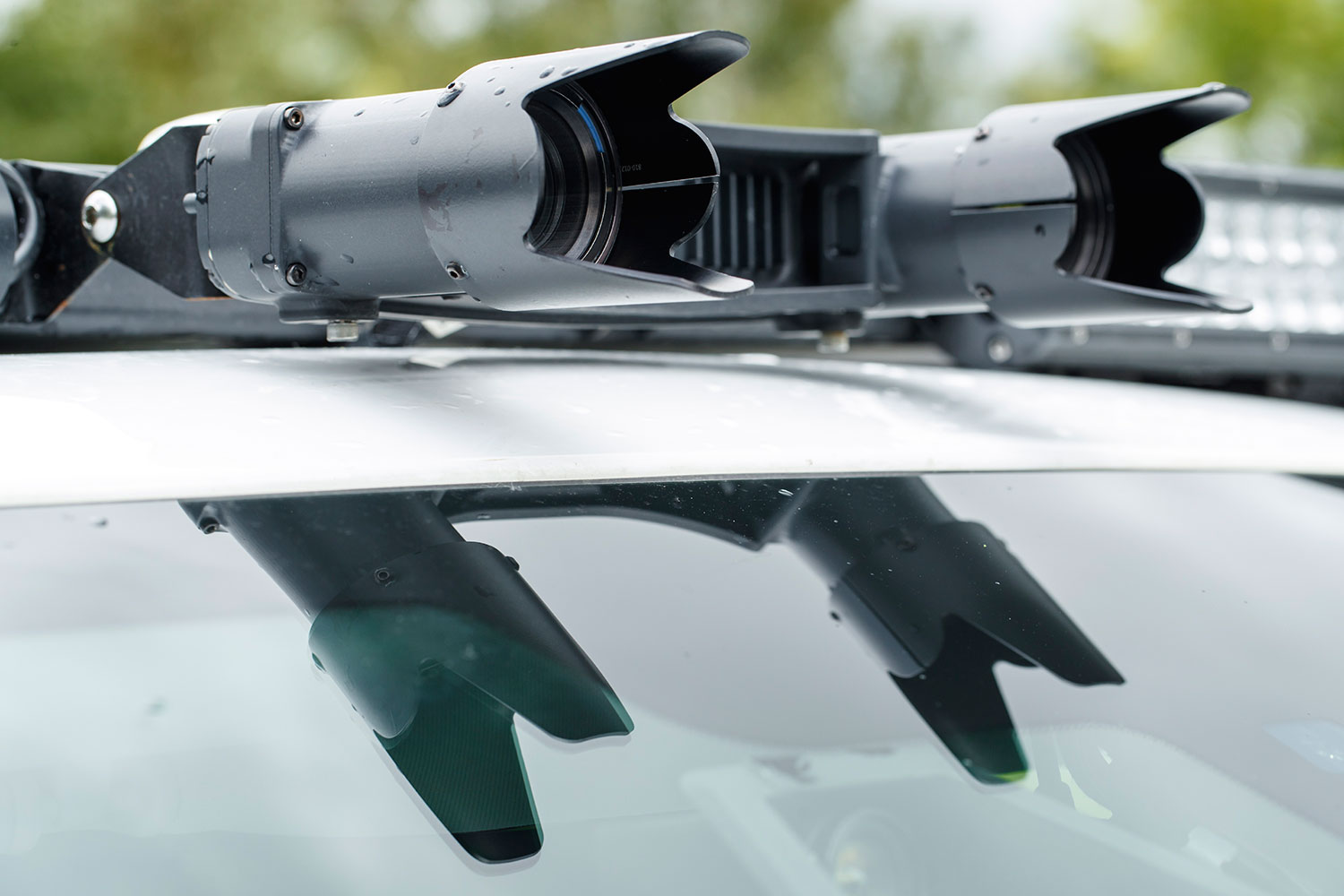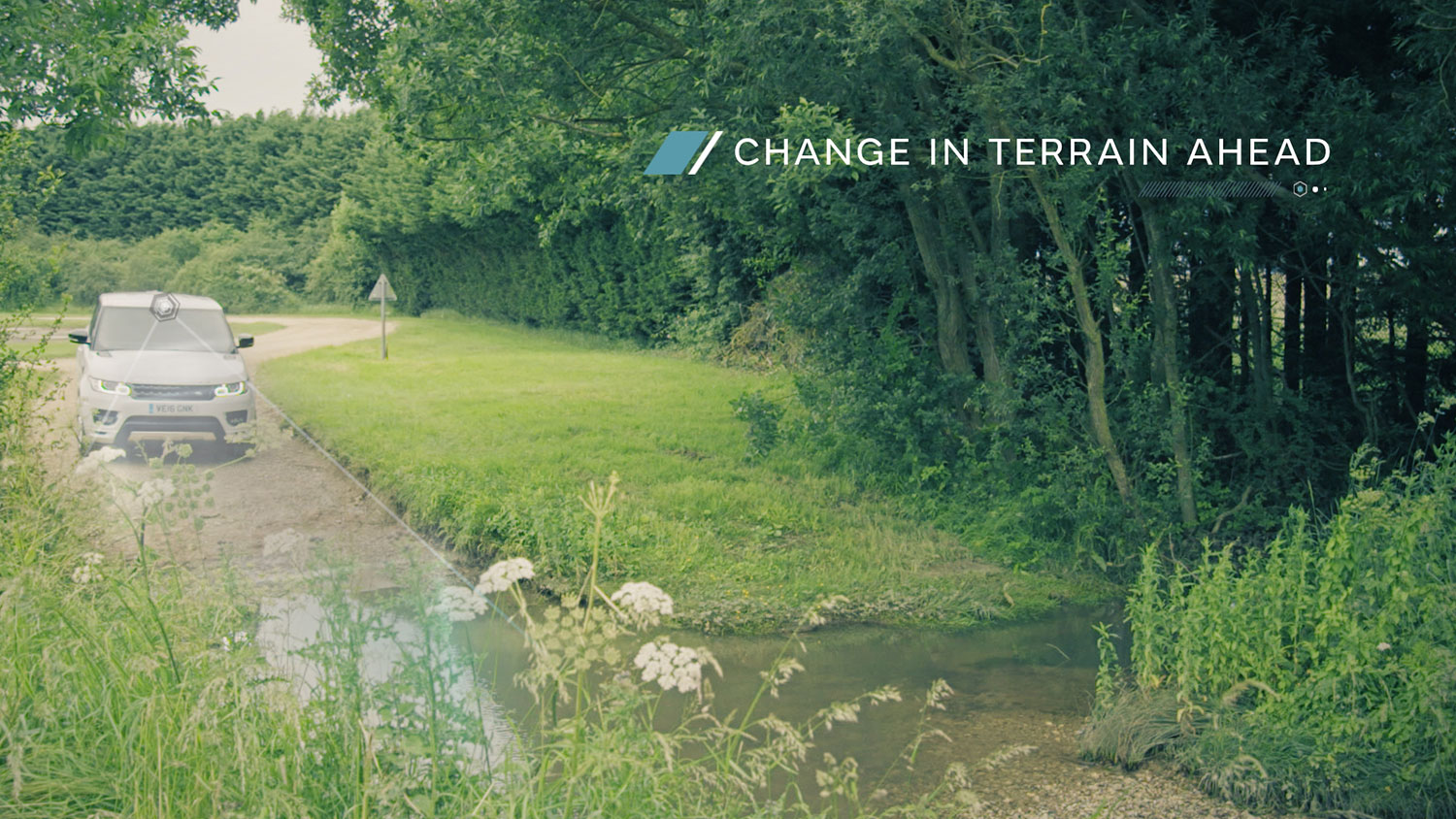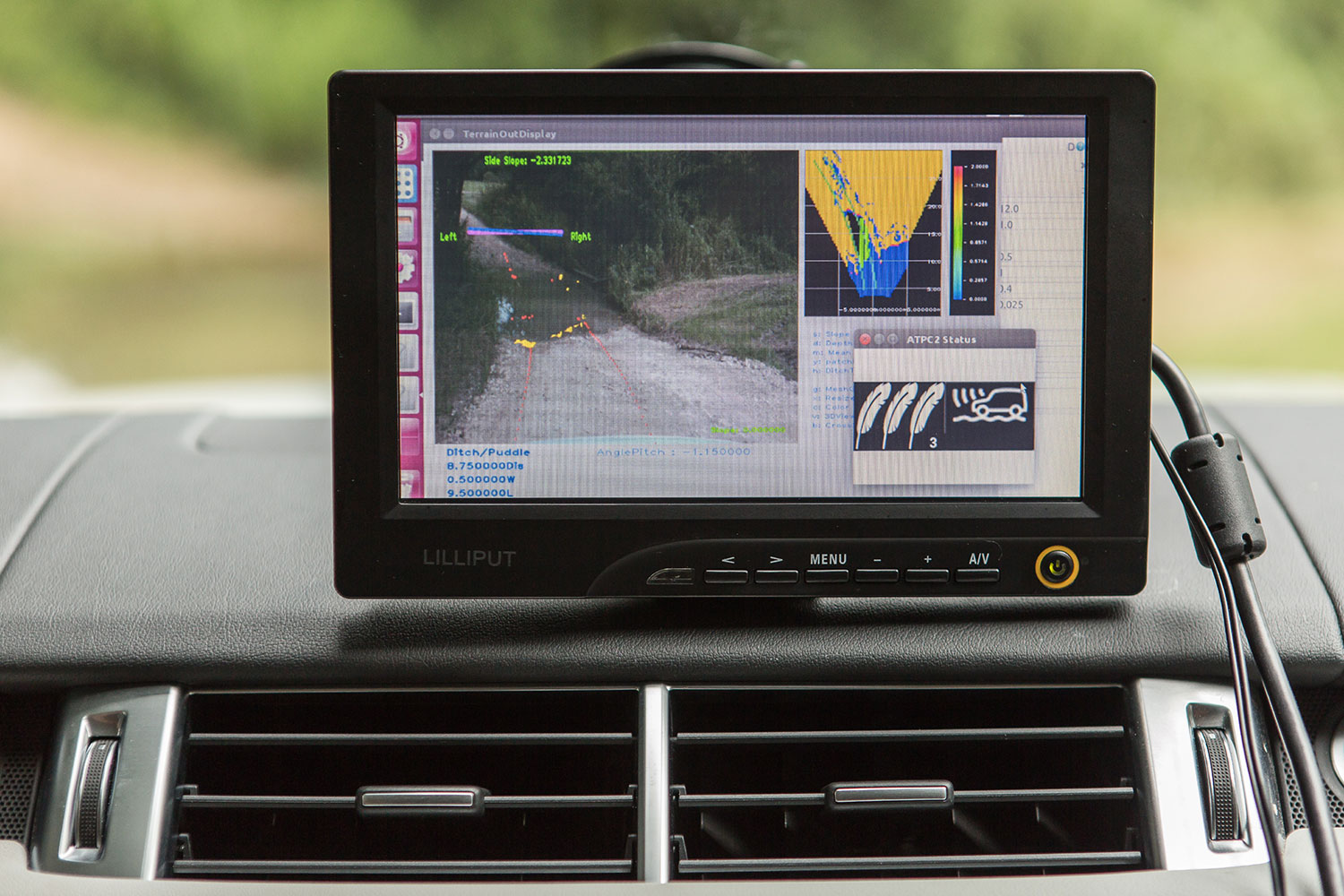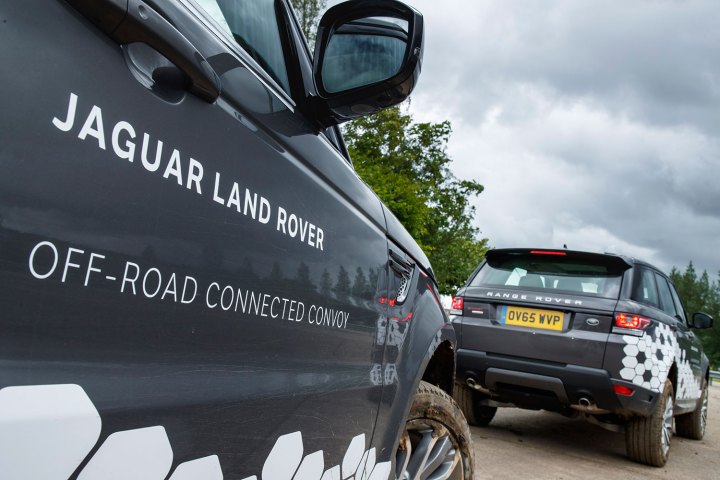
Jaguar Land Rover, maker of some of the most engaging and luxurious vehicles on today’s roads, is developing technology that promises to turn your car into the most aware and accurate driver on the roads of the future.
A car that’s perfectly in tune with its surroundings, never distracted, and always connected. While that sounds like the plot of a science-fiction sitcom, the transformation is happening as you read these words.
Intrigued, Digital Trends hopped behind the wheel of nearly a dozen prototypes at Jaguar Land Rover’s (JLR) proving grounds in England to find out what the future has in store for both on- and off-road driving.
JLR stresses that the point of developing semi- and fully-autonomous technology isn’t to replace the driver altogether or to create driver-less pods, a not-so-subtle reference to the oft-hyped Google Car. The company wants to give the driver more, not less. To that end, the autonomous features will help ease the flow of traffic in crowded cities, they’ll reduce traffic jams, they’ll improve air quality, and they’ll help motorists use less fuel. However, it will ultimately be up to the driver to decide which systems are active and when.
Some driving aids are relatively basic and reasonably close to production. For example, Overhead Clearance Assist relies on a stereo camera to measure the height of obstructions in the road (such as the entrance of a parking garage or a toll booth) and warn the driver with visual and audible messages if it detects one that’s too low. Now, you’re probably thinking that there’s not a parking garage in the world that a compact sports sedan like the XE won’t fit in, but remember that many people travel with bulky items such as bikes and roof boxes strapped to the top of their car. Additionally, the system detects low branches, which is helpful when going off the beaten path.
- 1. Roadwork Assist
- 2. Roadwork Assist
- 3. Overhead Clearance Assist
- 4. Overhead Clearance Assist
Roadwork Assist uses the same forward-facing stereo camera to generate a 3D view of the road ahead and scope out traffic cones and barriers in order to detect when the car has entered a construction zone. The system gently steers the car towards the middle of the lane it’s traveling in, which is a real boon when driving through narrow construction zones. JLR stresses that Roadwork Assist isn’t entirely autonomous (at least not yet) and the driver still needs to keep his or her hands on the steering wheel at all times. Of course, the steering input can be overridden if needed.
Teaching a car how to talk
Many of the technologies that JLR engineers are working on are built around vehicle-to-vehicle and vehicle-to-infrastructure communication systems. In laymen’s terms, cars equipped with these systems silently chat with each other and with the roadside infrastructure to share information about the road ahead.
“Our aim is to give drivers exactly the right information at the right time. A well-informed driver is obviously a safer driver.”
This technology is a little further away from production because it requires bigger investments. For example, road signs and traffic lights need to be equipped with communication devices in order to send out messages to connected cars in the area. These messages – known as over the horizon warnings – inform the driver when he or she is about to be overtaken by an emergency vehicle such as an ambulance, and when they’re about to drive past a roadside hazard like a broken-down vehicle. The system also displays street signs on the dash-mounted touch screen, among other functions. It all happens seamlessly, and in real-time.
“Our aim is to give drivers exactly the right information at the right time. A well-informed driver is obviously a safer driver,” sums up Peter Virk, JLR’s director of connected car technologies and apps.
Over the horizon warning messages can save lives. For example, motorists currently find out that another driver is going the wrong way on the highway if they’ve got the radio turned on, or if they drive by an electronic road sign. With vehicle-to-vehicle and vehicle-to-infrastructure communication they’ll be warned instantly.
Vehicle-to-vehicle communication also enhances existing technology, such as adaptive cruise control (ACC). Current ACC systems use a radar to detect the speed of the vehicle ahead and follow it while maintaining a safe distance. The radar signal bounces off the car ahead and comes back to the car it came from, which inevitably creates a delay in reaction time. If the car ahead brakes, the car following it will react about a second or so later.

Dedicated short range communications (DSRC) wireless technology drastically reduces that reaction time by enabling what’s called platooning. The cars travel in a convoy that’s wirelessly connected to a lead car, much like you sync your phone to your computer to share files, and data about the lead car’s movements is instantly transferred to every other car in the group. When it brakes, the cars following it apply the same amount of brake force in mere milliseconds; the same happens when it accelerates. This makes it possible for cars to travel much closer to each other without augmenting the risk of an accident because they react much faster than humans. All the driver has to do is sit back, relax, and keep the car in its lane. It takes some getting used to because the cars travel within just a few feet of each other, but we quickly learned to trust the system when we realized that it lives up to its promise of reacting faster than a human.
It’s important to note that electronic driving aids are always actively scanning the road, even when they’re not providing any input because the car is being driven solely by the driver. This ensures the various driving aids are ready to take over if the driver doesn’t react in the event of an emergency, such as if a car ahead suddenly slams on the brakes.
Now, take me to the mountains!
JLR is pushing autonomy a step beyond its rivals by developing innovative systems that are capable of taking over when the pavement ends. There’s usually little in the way of infrastructure off the beaten path, but cars use vehicle-to-vehicle communication technology to talk off-road, allowing them to travel in a convoy like they do on the highway.
“In the future we’ll offer autonomous driving on any surface or terrain.”
“If you enjoy the benefits of autonomous lane-keeping at the start of your journey, you’d want it to continue if you turn onto a gravel road,” explains Adrian Hallmark, JLR’s group strategy director.
On paper, the system is similar to the C-ACC tech detailed above. That means data from the lead car is automatically sent to the car(s) following it. The information transferred off-road includes the steering angle, the amount of wheel slip detected, the height of the adjustable suspension, and which Terrain Response setting is engaged. Additionally, the entire convoy is informed when one of the vehicles stops.
There’s more. Land Rover’s Terrain-Based Speed Adaptation (TBSA) makes off-road driving safer and more comfortable even if a vehicle is traveling by itself. Billed as an evolution of Land Rover’s existing All-Terrain Progress Control (ATPC) technology, it allows the car to detect what kind of terrain lies ahead and adjust its speed accordingly – even if that terrain happens to be a river. Motorists still need to steer, but TBSA ensures they don’t inadvertently drive full-speed through a ditch.
The Range Rover Sport prototype we drove held a steady 20 mph on a dirt road as it processed the information shared by sensors tasked with scanning the road ahead. It gently reduced its speed as soon as it detected that the road dipped, slowed to a crawl while crossing a creek, and gradually sped back up to 20 mph on the other side. This was all done smoothly, accurately, and with no pedal input whatsoever.
Equally futuristic is Surface ID and 3D Path Sensing, a technology which uses two ultrasonic sensors to scan the terrain that’s directly ahead of the car. Land Rover has traveled all over the world to build up a massive database of surfaces including sand, gravel, and snow, and it’s constantly adding information to it. The system detects what kind of terrain the car is about to drive on, finds information about it in the database, and tells the driver which Terrain Response setting needs to be engaged. Surface ID is still at the embryonic stage of development, but it’s expected to pave the way for an autonomous off-roader.
What’s next?
None of the aforementioned tech features are currently available on a production car. However, they highlight JLR’s vision for future mobility, so it’s safe to assume that they’ll make the transition from prototype to production in the coming years or decades.
JLR is building a research facility called National Automotive Innovation Center at the University of Warwick in England that will house about a thousand engineers sent from the company’s headquarters, from neighboring schools, and from participating suppliers. It’s billed as an innovation hub for driver-focused technologies. The company is also planning to manufacture no less than 100 autonomous cars in the coming years and test them in real-world situations on a 41-mile course. However, these advances aren’t useful if motorists aren’t ready to use them, which is why the technology is being rolled out gradually and carefully.
“In the future we’ll offer autonomous driving on any surface or terrain,” predicts Hallmark. “This journey is deliberately one of evolution, not revolution, because we need drivers to ensure they accept and embrace these new technologies, and clearly feel safe using them. Over time drivers will experience these real benefits, and they’ll begin to trust the vehicle,” he added.
Editors' Recommendations
- Land Rover searches for ways to keep customers and regulators satisfied
- Exclusive: How Land Rover’s designers resurrected the Defender
- Jaguar Land Rover is developing this amazing 3D head-up display
- BMW and Jaguar-Land Rover set aside their differences to develop new EVs
- Jaguar Land Rover tests sensory steering wheel to combat distracted driving




